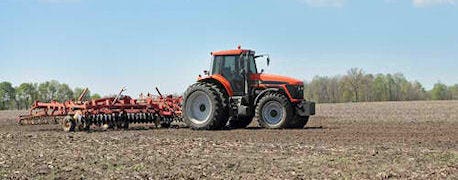February 25, 2013

John McGuire is a consultant who makes his living working with farmers and the data they collect from precision farming machines. McGuire operates Simplified Technology Services, based in Montpelier, Ohio, and works both sides of the Indiana-Ohio line.

Hardware first: Most people enter precision through hardware, like this yield monitor. But it's just the means to an end – decision making based on data management.
If you're just starting in precision farming, hardware will be the place you begin, he says. It's actually the low-hanging fruit – the investments that offer the most payback. He's talking about things such as yield monitors with mapping, GPS, auto-steering, row shut-offs for the planter, and auto-section control for the sprayer. These investments can offer large returns on your investment if you haven't been using the precision farming technology before, he says.
"To this point hardware has been what most people think of when they think of precision agriculture, and it still is today," he says.
What comes next is to use these tools to collect good data, he insists. That means careful calibration of yield monitors, which can take a large amount of time. However, data is only as good as how well you collect it, so calibration is worth the time it takes to do it.
McGuire believes that up to 80% of the value of precision farming is still untapped. He believes that will come from analysis of the data collected, not from the hardware itself. The problem is it's not as clear-cut and easy to learn how to use the data to make decisions as it is to plug in a GPS unit or a plug and play monitor. But the real money-making decisions will come when you know how to rely on the data you have collected on your own farm so you can make important decisions, he says.
You May Also Like




